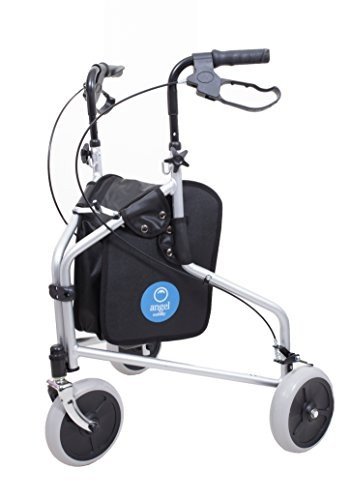A Comprehensive Guide to Buying a Mobility Scooter
Mobility scooters have ended up being an essential tool for many people looking to improve their independence and mobility. With a huge variety of models and functions offered, picking the ideal mobility scooter can be daunting. This short article offers a useful guide to assist consumers browse their choices, examine their requirements, and make an informed purchase.
Understanding Mobility Scooters
Mobility scooters are electric automobiles developed for people who experience mobility difficulties. They are especially helpful for elders, those with disabilities, or people recovering from injuries. Mobility scooters can vary widely in terms of design, functions, and rates.
Types of Mobility Scooters
Before embarking on a purchase, it's vital to understand the different kinds of mobility scooters readily available:
Three-Wheel Scooters:
- Generally more maneuverable in tight spaces
- Lightweight and portable
- Suitable for indoor usage
Four-Wheel Scooters:
- Offer higher stability and balance
- Ideal for outdoor usage over numerous terrains
- Usually have a longer battery life
Foldable/Portable Scooters:
- Designed to be easily transported and kept
- Can frequently suit the trunk of an automobile
- Suitable for those who take a trip frequently
Heavy-Duty Scooters:
- Built to accommodate larger people
- Frequently come with more robust functions for outside usage
- Normally geared up with bigger batteries for extended range
Factors to Consider When Buying a Mobility Scooter
1. Weight Capacity
Select a mobility scooter that can support the user's weight. Many scooters have a weight limit varying from 250 to 500 pounds. It is important to make sure that the scooter can accommodate the user comfortably.
2. Variety and Battery Life
The range is how far the mobility scooter can take a trip on a single charge. Typical ranges vary in between 10 to 30 miles. Think about the user's day-to-day activities and pick a scooter with an ideal range.
3. Scooter Dimensions
Consider the size of the scooter, including its weight and measurements. A more compact scooter may be ideal for narrow corridors and tight areas, while bigger designs use extra stability and convenience.
4. Terrain Capability
Evaluate where the scooter will mostly be used. If the user prepares to take a trip primarily on pavement, a lightweight model may be enough. Nevertheless, if the user needs to pass through gravel or unequal surfaces, consider a four-wheel scooter constructed for off-road use.
Top Features to Look For
Comfort
- Adjustable Seats: Look for scooters with cushioned and height-adjustable seats to ensure convenience throughout travel.
- Armrests: These boost safety and support while navigating.
Safety and Visibility
- Headlights and Taillights: Essential for nighttime use.
- Turn Signals and Reflectors: Improve exposure and safety while on the roadway.
User-Friendly Controls
- Joystick or Drive Controls: These must be intuitive and simple to control.
- Easy-to-Read Displays: A control board that reveals battery life, speed, and range can improve the user experience.
Additional Features
- Storage Compartments: These use added convenience for carrying individual items while on the go.
- Weather condition Protection: Consider designs with rain covers or windscreens if used in variable climate condition.
Cost Considerations
When budgeting for a mobility scooter, costs can vary anywhere from ₤ 500 to over ₤ 5,000 depending on the model, functions, and brand. Extra costs might include:
- Extended Warranty: Protects versus defects and can save cash in the long run.
- Devices: Optional functions, such as upgraded seats, lights, or storage services.
| Function | Expense Range |
|---|---|
| Fundamental Models | ₤ 500 - ₤ 1,500 |
| Mid-Range Models | ₤ 1,500 - ₤ 3,000 |
| High-End Models | ₤ 3,000 - ₤ 5,000 |
Financing Options
Lots of sellers provide funding plans, and some city government efforts may supply grants or assistance for those in need. Investigate prospective monetary support with community resources or mobility service companies.
FAQs about Buying a Mobility Scooter
What is the difference between a mobility scooter and a wheelchair?
Mobility scooters are motorized and permit users to browse separately, while wheelchairs might need physical help or manual operation.
How do I keep a mobility scooter?
Routine upkeep includes inspecting battery life, cleaning the scooter, and checking tires and brakes. Constantly describe mobility scooter suppliers for specific standards.
Can mobility scooters be utilized inside your home?
Yes, many designs are developed for both indoor and outside usage. However, three-wheel scooters tend to be better fit for indoor navigation due to their tighter turning radius.
Are mobility scooters covered by insurance?
Some insurance coverage prepares cover a part of the expenses for mobility scooters if they are considered clinically essential. Contact your service provider for specific details.
How quickly can a mobility scooter go?
A lot of mobility scooters have an optimal speed varying from 4 to 8 miles per hour. However, the suitable rate might vary depending upon regional policies.
Getting a mobility scooter can considerably enhance one's independence and quality of life. By understanding the types, features, and costs related to mobility scooters, prospective purchasers can make well-informed decisions that fit their requirements and choices. Personalization and extensive research study are key to making sure fulfillment with this essential investment.

